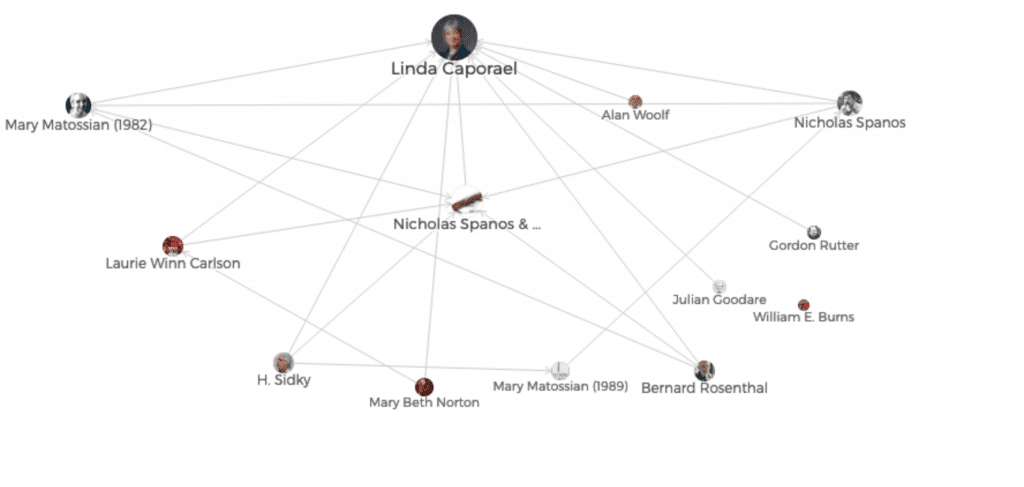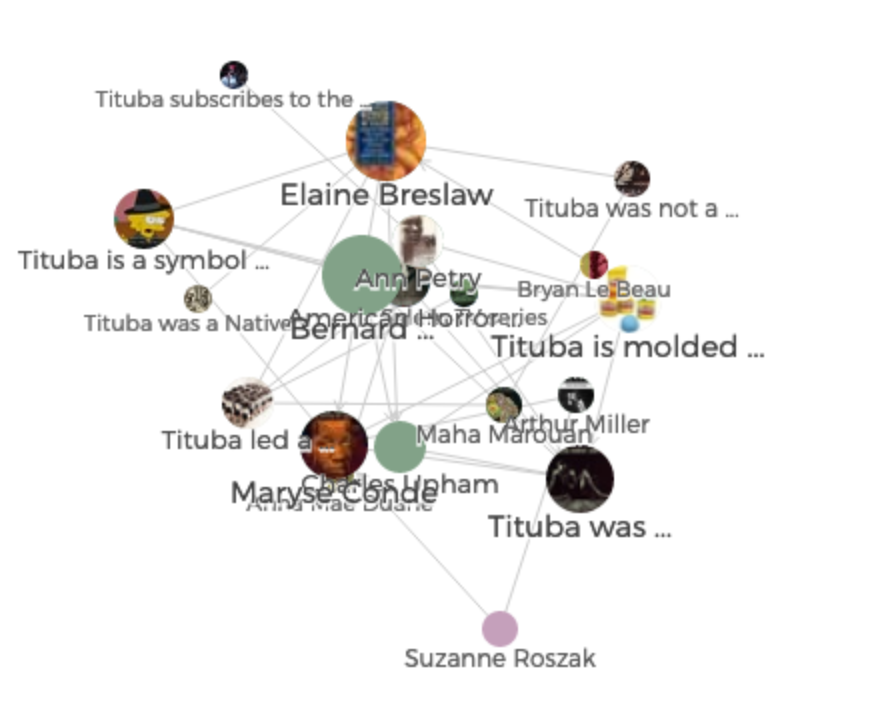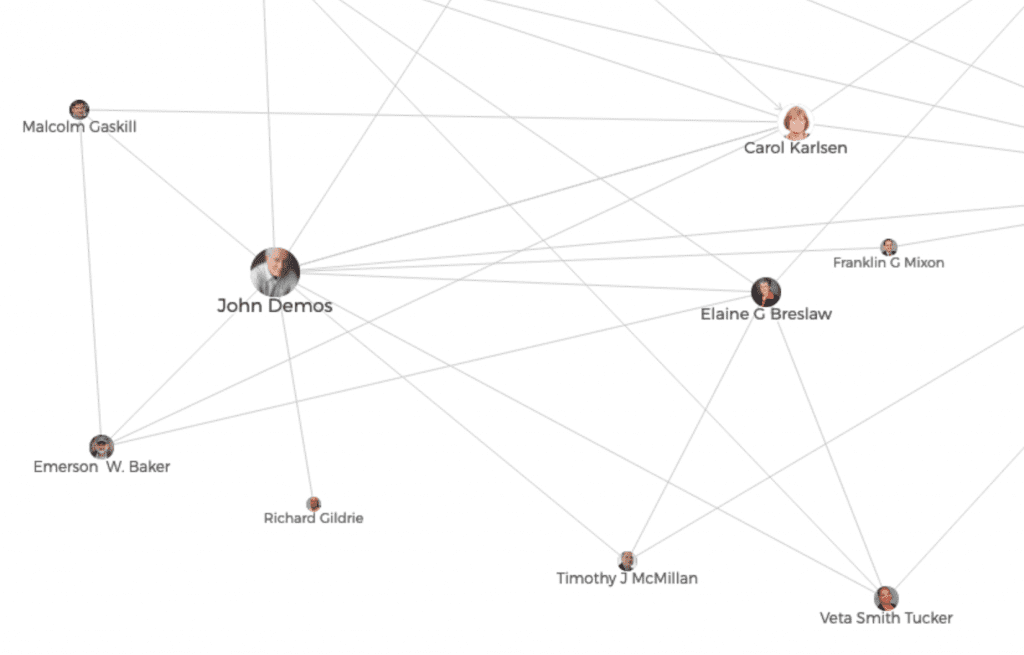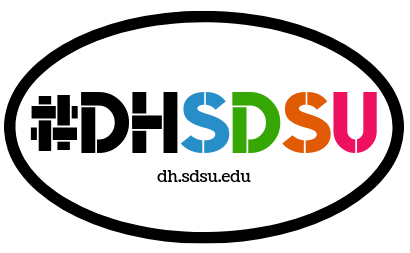When we see things differently, we can ask different questions. Digital Humanities tools offer new ways of seeing texts, images, and data sets, thus offering new ways to explore, examine, and teach them.
Tools:
- Gephi: free and open-source leading software for making all kinds of graphs and networks.
- Onodo: a free tool for creating interactive network visualizations (presented below)
- Textexture: visualize a text as a network
- See the full list of DH@SDSU curated tools here
Resources:
- Step-by-step guide to Onodo in Google doc (by Pam Lach)
- Onodo tutorial created by Fabrizio Lacarra Ramirez, DH Center Student Assistant, Spring 2021.
- New in Spring 2022: Spanish-language Onodo tutorial, created by Fabrizio Lacarra Ramirez, DH Center Specialist.
Examples of Student Projects:
Students from Professor Beth Pollard’s HIST 400 (Spring 2017) used Onodo for a variety of purposes and projects that visualized social and historical networks:



Readings:

In this groundbreaking book, Franco Moretti argues that literature scholars should stop reading books and start counting, graphing, and mapping them instead. In place of the traditionally selective literary canon of a few hundred texts, Moretti offers charts, maps and time lines, developing the idea of “distant reading” into a full-blown experiment in literary historiography, in which the canon disappears into the larger literary system.

- Kathryn Schulz, “What is Distant Reading?” (The New York Times, 2011)
Faculty point of contact:
- Elizabeth Pollard (History). epollard@sdsu.edu
- Pam Lach (DH Librarian). plach@sdsu.edu
